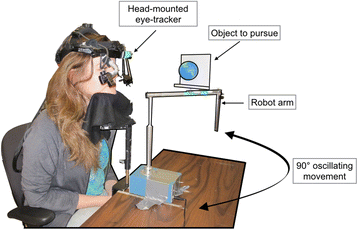Visual pursuit as a marker of consciousness [New paper]
Visual pursuit is the ability of an individual to follow a moving object with their eyes. This ability is broadly considered to require consciousness (i.e. it is not reflexive) and, as a result, it is used in diagnostic assessments to separate patients who are minimally conscious from those in the vegetative state (i.e. unconscious).
In the last few years, it has been observed that a significant proportion of patients do not exhibit visual pursuit of an object, like a ball, but do exhibit visual pursuit of a mirror - or, more accurately, their reflection in a moving mirror. This has led some to suggest that mirror pursuit is a more sensitive measure of consciousness than object pursuit.
However, we wanted to test whether this conclusion was valid. Indeed, an alternative conclusion is that mirror pursuit does not index consciousness or cognition in the same way as object pursuit. This would mean that mirror pursuit is not a more sensitive measure of consciousness, but simply a measure of something else.
To test these hypotheses, we recorded the eye movements of healthy individuals while they separately pursued both a mirror and an object. We also manipulated their cognitive resources by requiring them to complete a demanding mental task at the same time. Our behavioural and physiological results indicate that mirror pursuit and object pursuit do indeed tap similar mental capacities. Importantly, mirror pursuit is also associated with eye movements that are quantifiably smoother, and may therefore be more readily detected in a clinical assessment.
This provides further support for recommendations to use a mirror when assessing visual pursuit after severe brain injury. The greater sensitivity of the mirror also hints at the importance of self-referential stimuli in assessments of awareness.

Reference:
Cruse, D., Fattizzo, M., Owen, A. M., & Fernández-Espejo, D. (2017). Why use a mirror to assess visual pursuit in prolonged disorders of consciousness? Evidence from healthy control participants. BMC Neurology, 17:14, PDF
